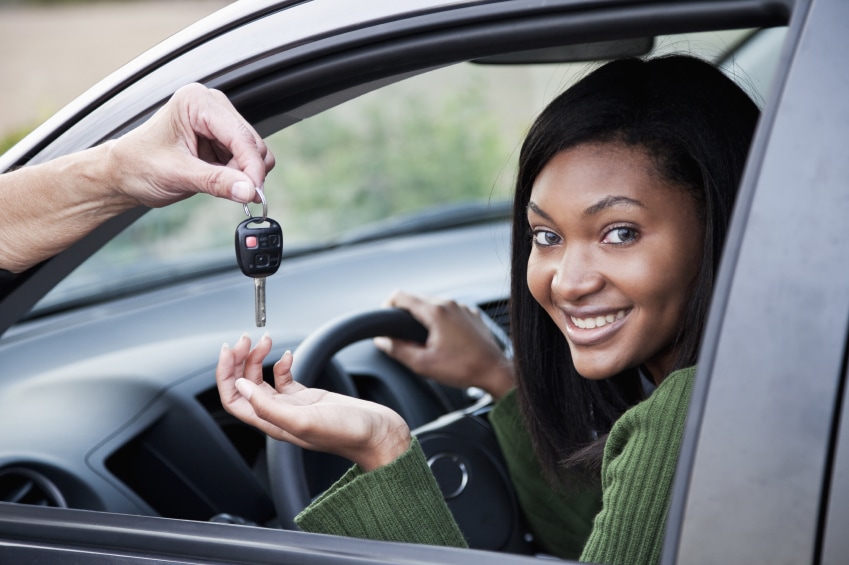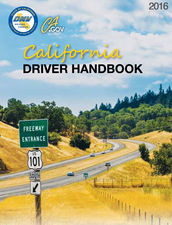GETTING THAT DRIVER'S LICENSE
STEP ONE: STUDY THE CALIFORNIA DRIVER'S HANDBOOK
|
CALIFORNIA DRIVER'S HANDBOOK 2017
*link to most recent handbook* There are many online driver's ed courses starting as low as 9.99 on up.
Simply "google" California Driver's Education to find them. BUT, Here's a free option *Free Driver's Ed course online through http://www.freedriversedonline.com/ |
|
STEP TWO: LET'S GET THAT PERMIT
To obtain a permit if you are 18 years old or older you must: Complete a Driver License or Identification Card Application form (DL 44). To obtain this form by mail, call DMV's automated phone service 24 hours a day, 7 days a week at 1-800-777-0133. Present an acceptable birth date/legal presence document, and/or identity document. Present acceptable residency documents. Provide your social security number. Provide your true full name. Pay the application fee. Pass a knowledge test. Additional information regarding a permit if you are 18 years old or older. |
practicepracticepracticepracticepracticepracticepracticepracticepracticepracticepracticepracticepracticepracticepractice
practicepracticepracticepracticepracticepracticepracticepracticepracticepracticepracticepracticepracticepracticepractice practicepracticepracticepracticepracticepracticepracticepracticepracticepracticepracticepracticepracticepracticepractice |
Practice Test and LINKS
|
Sample Class C Written Test
1. You may drive off of the paved roadway to pass another vehicle: If the shoulder is wide enough to accommodate your vehicle. If the vehicle ahead of you is turning left. Under no circumstances. 2. You are approaching a railroad crossing with no warning devices and are unable to see 400 feet down the tracks in one direction. The speed limit is: 15 mph. 20 mph. 25 mph. 3. When parking your vehicle parallel to the curb on a level street: Your front wheels must be turned toward the street. Your wheels must be within 18 inches of the curb. One of your rear wheels must touch the curb. 4. When you are merging onto the freeway, you should be driving: At or near the same speed as the traffic on the freeway. 5 to 10 MPH slower than the traffic on the freeway. The posted speed limit for traffic on the freeway. 5. When driving in fog, you should use your: Fog lights only. High beams. Low beams. 6. A white painted curb means: Loading zone for freight or passengers. Loading zone for passengers or mail only. Loading zone for freight only. 7. A school bus ahead of you in your lane is stopped with red lights flashing. You should: Stop, then proceed when you think all of the children have exited the bus. Slow to 25 MPH and pass cautiously. Stop as long as the red lights are flashing. 8. California's "Basic Speed Law" says: You should never drive faster than posted speed limits. You should never drive faster than is safe for current conditions. The maximum speed limit in California is 70 mph on certain freeways. 9. You just sold your vehicle. You must notify the DMV within ___ days. 5 10 15 10. To avoid last minute moves, you should be looking down the road to where your vehicle will be in about ______________. 5 to 10 seconds 10 to 15 seconds 15 to 20 seconds Answer SheetQuestion 1. You may drive off of the paved roadway to pass another vehicle:
Correct Answer: Under no circumstances. Question 2. You are approaching a railroad crossing with no warning devices and are unable to see 400 feet down the tracks in one direction. The speed limit is: Correct Answer: 15 MPH Question 3. When parking your vehicle parallel to the curb on a level street: Correct Answer: Your wheels must be within 18 inches of the curb. Question 4. When merging onto the freeway you should be driving: Correct Answer: At or near the same speed as the traffic on the freeway. Question 5. When driving in fog you should use your: Correct Answer: Low beams. Question 6. A white painted curb means: Correct Answer: Loading zone for passengers or mail only. Question 7. A school bus ahead of you in your lane is stopped with red lights flashing. You should: Correct Answer: Stop as long as the red lights are flashing. Question 8. California's "Basic Speed Law" says: Correct Answer: You should never drive faster than is safe for current conditions. Question 9. You just sold your vehicle. You must notify the DMV within _____ days. Correct Answer: 5 Question 10. To avoid last minute moves, you should be looking down the road to where your vehicle will be in about _______________. Correct Answer: 10 to 15 Seconds |
What can I expect during the noncommercial Class C driving test?
The Class C driving test is used to determine your driving competency. You must provide a vehicle that is safe to drive and insured. When you appear for your driving test, the driving test examiner will ask to see your instruction permit(s), driver education and driver training completion certificates (if you are a minor), and proof of insurance for your vehicle.
Your driving test begins with a vehicle safety check. This pre-drive inspection demonstrates that you are familiar with your vehicle and that your vehicle meets the DMV's minimum safety requirements. You will be asked to identify and/or demonstrate parts of the vehicle commonly used in driving. If your vehicle does not meet the minimum safety requirements, your driving test will be rescheduled.
You will also be asked to demonstrate the arm signals for right and left turns, and for stopping or slowing down. The examiner will ask you to drive out of the DMV driving test line and the driving portion of your test will begin. Your examiner is an observer only and will only speak to give you instructions ahead of time on what driving maneuvers you are to perform. He/she will not try to trick you or ask you to do drive illegally. Your examiner will be marking your score sheet during your driving test.
On the road, your examiner will be looking to see whether you:
If you make a critical driving error (CDE), you will be given an unsatisfactory test score (failure). A CDE is a dangerous or potentially dangerous driving maneuver. Examples of critical driving errors include:
When you return to the DMV, your examiner will inform you whether your driving test was "satisfactory" (pass) or "unsatisfactory" (fail). He/she will also go over your score sheet with you, and explain any mistakes you made and stress areas that need improvement. If your driving test is unsatisfactory, you must reschedule for another day and pay a retest fee when you want to take another driving test.
Study the Parent-Teen Training Guide (PDF) to help you with practicing your driving skills and the California Driver's Handbook to familiarize yourself with the laws of the road.
Review the "How to prepare for your driving test" brochure for additional information.
The Class C driving test is used to determine your driving competency. You must provide a vehicle that is safe to drive and insured. When you appear for your driving test, the driving test examiner will ask to see your instruction permit(s), driver education and driver training completion certificates (if you are a minor), and proof of insurance for your vehicle.
Your driving test begins with a vehicle safety check. This pre-drive inspection demonstrates that you are familiar with your vehicle and that your vehicle meets the DMV's minimum safety requirements. You will be asked to identify and/or demonstrate parts of the vehicle commonly used in driving. If your vehicle does not meet the minimum safety requirements, your driving test will be rescheduled.
You will also be asked to demonstrate the arm signals for right and left turns, and for stopping or slowing down. The examiner will ask you to drive out of the DMV driving test line and the driving portion of your test will begin. Your examiner is an observer only and will only speak to give you instructions ahead of time on what driving maneuvers you are to perform. He/she will not try to trick you or ask you to do drive illegally. Your examiner will be marking your score sheet during your driving test.
On the road, your examiner will be looking to see whether you:
- Check traffic, including pedestrians, by your head and eye movements as well as using your mirrors.
- Signal before you pull into or out of traffic, make a turn, or change lanes.
- Drive at an appropriate and legal speed: not too fast and not too slow.
- Leave adequate space between your vehicle and other vehicles.
- Maintain good control of your vehicle.
- Obey all traffic laws.
- Backing your vehicle.
- Driving through intersections (controlled, uncontrolled, and stop signs).
- Completing left and right hand turns.
- Completing left and right lane changes.
- Driving in residential and business areas.
If you make a critical driving error (CDE), you will be given an unsatisfactory test score (failure). A CDE is a dangerous or potentially dangerous driving maneuver. Examples of critical driving errors include:
- Driving at least 10 mph over or under the speed limit.
- Failing to look over your shoulder when pulling into traffic or changing lanes.
- Running a red light.
- Failing to use windshield wipers when necessary because of rain.
When you return to the DMV, your examiner will inform you whether your driving test was "satisfactory" (pass) or "unsatisfactory" (fail). He/she will also go over your score sheet with you, and explain any mistakes you made and stress areas that need improvement. If your driving test is unsatisfactory, you must reschedule for another day and pay a retest fee when you want to take another driving test.
Study the Parent-Teen Training Guide (PDF) to help you with practicing your driving skills and the California Driver's Handbook to familiarize yourself with the laws of the road.
Review the "How to prepare for your driving test" brochure for additional information.


